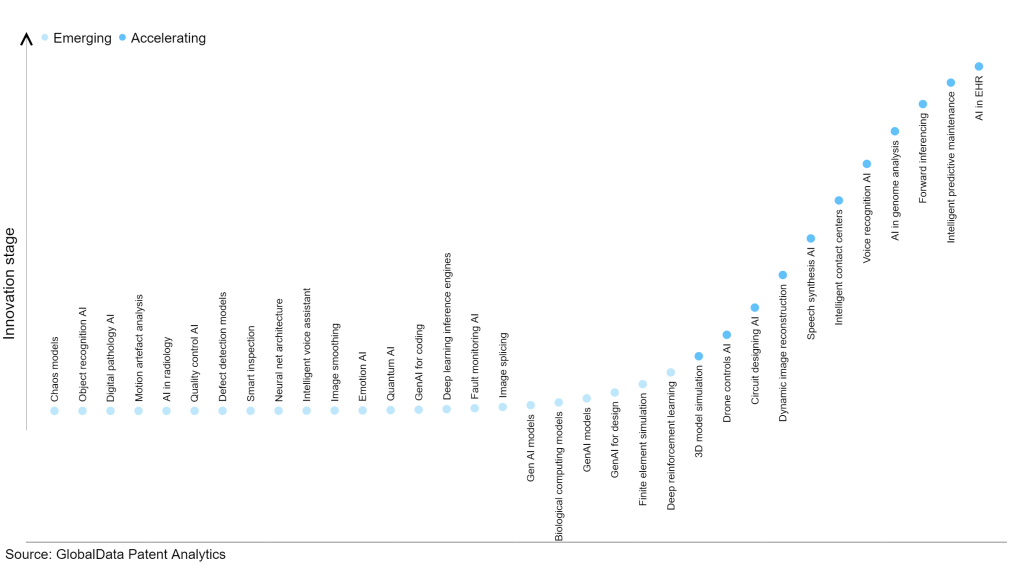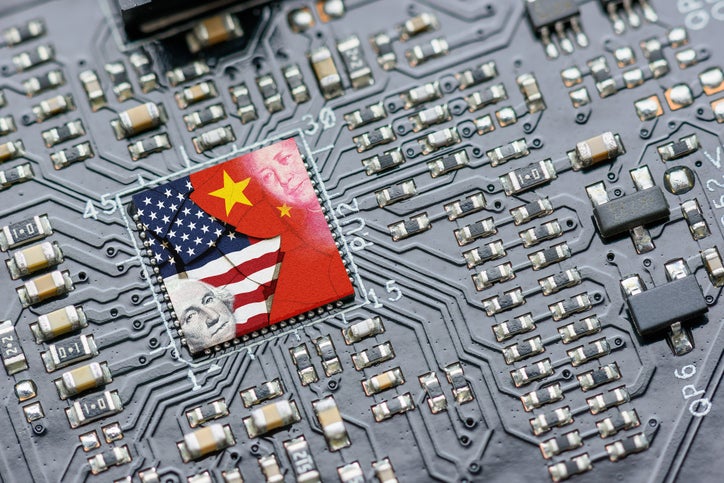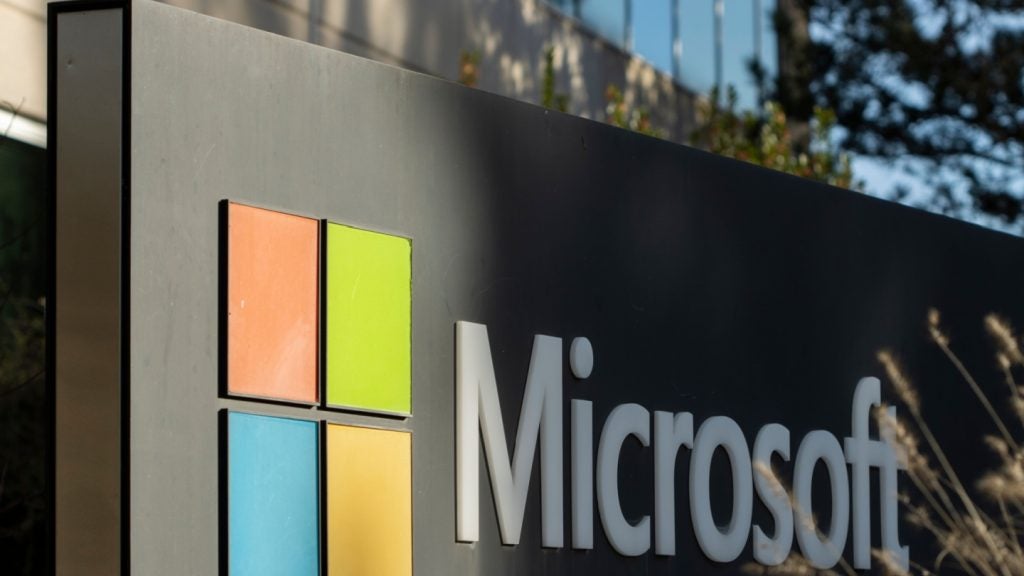The technology industry continues to be a hotbed of patent innovation. Activity is driven by the need for faster and more accurate diagnoses, improved patient outcomes, and enhanced workflow efficiency for healthcare providers, and growing importance of technologies such as convolutional neural networks (CNNs), natural language processing (NLP), and generative models. In the last three years alone, there have been over 4.1 million patents filed and granted in the technology industry, according to GlobalData’s report on Artificial intelligence in technology: AI in radiology. Buy the report here.
However, not all innovations are equal and nor do they follow a constant upward trend. Instead, their evolution takes the form of an S-shaped curve that reflects their typical lifecycle from early emergence to accelerating adoption, before finally stabilizing and reaching maturity.
Identifying where a particular innovation is on this journey, especially those that are in the emerging and accelerating stages, is essential for understanding their current level of adoption and the likely future trajectory and impact they will have.
190+ innovations will shape the technology industry
According to GlobalData’s Technology Foresights, which plots the S-curve for the technology industry using innovation intensity models built on over 1.5 million patents, there are 190+ innovation areas that will shape the future of the industry.
Within the emerging innovation stage, deep reinforcement learning, finite element simulation, and GenAI for design are disruptive technologies that are in the early stages of application and should be tracked closely. Artificial intelIigence (AI) in EHR, intelligent predictive maintenance, and forward inferencing are some of the accelerating innovation areas, where adoption has been steadily increasing.
Innovation S-curve for artificial intelligence in the technology industry

AI in radiology is a key innovation area in artificial intelligence
AI in radiology involves the application of artificial intelligence techniques ssuch as machine learning and deep learning to aid radiologists in the evaluation of medical images. It encompasses the creation and implementation of algorithms and models capable of automating diverse tasks in radiology, such as interpreting images, identifying anomalies, and providing diagnoses. Radiologists can enhance the efficiency, precision, and swiftness of patient diagnosis and treatment through the utilization of AI.
GlobalData’s analysis also uncovers the companies at the forefront of each innovation area and assesses the potential reach and impact of their patenting activity across different applications and geographies. According to GlobalData, there are 260+ companies, spanning technology vendors, established technology companies, and up-and-coming start-ups engaged in the development and application of AI in radiology.
Key players in AI in radiology – a disruptive innovation in the technology industry
‘Application diversity’ measures the number of applications identified for each patent. It broadly splits companies into either ‘niche’ or ‘diversified’ innovators.
‘Geographic reach’ refers to the number of countries each patent is registered in. It reflects the breadth of geographic application intended, ranging from ‘global’ to ‘local’.
Patent volumes related to AI in radiology
Source: GlobalData Patent Analytics
Among the companies innovating in AI in radiology, Koninklijke Philips is one of the leading patents filers. The company’s patents are aimed at computer-based process for delineating the boundary of a tumor or other afflicted tissue area, by capturing hyper or multispectral image data of a tissue sample containing said region. The assessment involves both a morphological examination and a spectral evaluation of the hyper- or multispectral image data, producing a morphological boundary for the tumor or diseased tissue, as well as a spectral boundary. These two boundaries are merged to yield a unified boundary for the tumor or diseased tissue, accompanied by an indication of its reliability. The other prominent patent filers in the space include Heartflow and Canon.
In terms of application diversity, Dental Monitoring leads the pack, while Heartflow and Stryker stood in the second and third positions, respectively. By means of geographical reach, Heartflow held the top position, followed by Immucor and Wuxi Hisky Medical Technologies.
AI augments the capabilities of radiologists by automating routine tasks such as image analysis and preliminary diagnostics. This leads to increased efficiency, quicker turnaround times, and allows radiologists to focus on more complex cases. Additionally, AI can enhance diagnostic accuracy by detecting subtle abnormalities that might be overlooked by the human eye, ultimately improving patient outcomes.
To further understand the key themes and technologies disrupting the technology industry, access GlobalData’s latest thematic research report on Artificial Intelligence (AI).
Premium Insights
From

The gold standard of business intelligence.
Blending expert knowledge with cutting-edge technology, GlobalData’s unrivalled proprietary data will enable you to decode what’s happening in your market. You can make better informed decisions and gain a future-proof advantage over your competitors.







